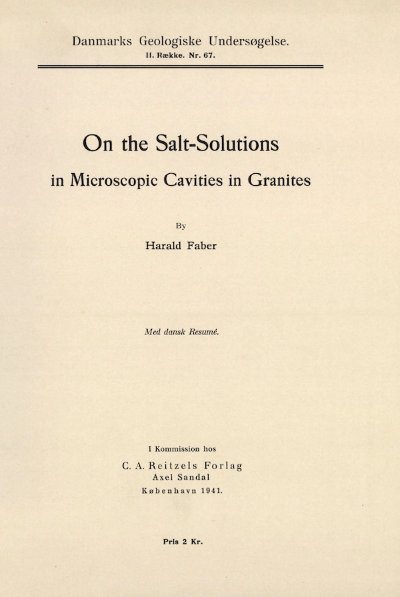On the Salt-Solutions in Microscopic Cavities in Granites
DOI:
https://doi.org/10.34194/raekke2.v67.6856Abstract
Microscopic cavities were observed by Davy in 1822 and by Brewster in 1826 in various crystals of minerals and were more thoroughly studied by H. C. Sorby (J) who in 1858 from his observations drew certain conclusions as to the origin of minerals and rocks. Sorby examined first the microscopic structure of crystals which he had made under different conditions from solutions of various salts. The crystals contained microscopic cavities which were sometimes filled with a liquid, viz. that from which the crystals had been formed, the mother-liquor. If the crystals were formed at an elevated temperature the liquid enclosed in the cavities would contract when cooled and formed what looked like air bubbles. If the crystals were heated, the liquid would expand and would again fill the cavities. Some crystals would contain real air-bubbles or crystals of other salts; and all this as natural consequences of the varying conditions under which the crystals had been formed. Sorby then examined the crystals of minerals and found in them, and particularly in quartz in rocks, similar phenomena as those observed in the artificial crystals and therefrom drew his conclusions as to the origin of the minerals. In the sixth chapter he deals with minerals and rocks formed by combined action of heat and water, and he speaks particularly about the formation of granite.
Downloads
Published
Issue
Section
License
This article is distributed under a CC-BY 4.0 licence, permitting free redistribution and reproduction for any purpose, even commercial, provided proper citation of the original work. Author(s) retain copyright over the article contents.


